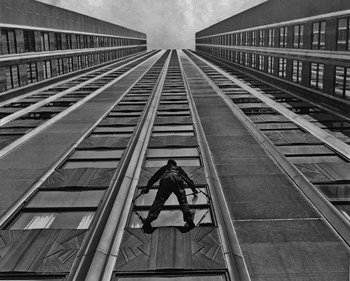
One of the defining architectural parts of a New York City building are its windows—whether it’s an ornate decorative window, one designed for energy savings or a large window that envelopes the side of a structure.
In a co-op or condo, windows play a large role in the structural and environmental integrity of the building, as well as add to its overall appearance. Depending on the building, repairing and maintaining windows and their various components can be a pretty straightforward undertaking, but if you happen to live in a landmark or historic building, it can also be an enormous bureaucratic pain. Windows are not always top-of-mind for condos or co-op boards because even when not properly maintained, they can last a long time. That’s why many times nothing is done to fix them until there is a problem. But when there is, a building needs to be prepared.
Time for a Replacement?
Matt Grossman, president of New York Windows & Doors in Long Beach says a condo or co-op should replace windows when there are drafts coming in, if the frames are falling apart, if the glass is cracking or there are any other glaring problems taking place.
Not that you need to have something wrong with the windows to make a replacement. There are plenty of savvy reasons to get the job done before things start to deteriorate.
By replacing proactively, “You’re increasing the value of your building, you’re helping your energy costs because you are saving on oil and heat, and your air conditioning will work better,” Grossman says. “There’s special glass that stops the sun better, which protects furniture and carpet.”
Marc Cohen, vice president of sales for CitiQuiet Windows in Hauppauge, says the life of an average window is considered 20-25 years but factors that come into play include how much use it gets and the amount of care it received over the years.
“Seal failure in the glass (fogging or moisture) and sashes not staying up may mean its time to consider a replacement,” he says. “Installing air conditioning units and removing them tend to beat up windows over time, and that could lead the a replacement being needed more rapidly.”
Kevin Barnes, president for Skyline Windows in the Bronx says that while there are some buildings that might inquire about a window replacement before something is wrong, the majority of his work comes from windows that have passed their prime and a full replacement project is necessary.
“Like anything, windows degrade over time. There could be air infiltration, water leaks, outside noise, or they will just no longer operate,” he says. “When the windows are no longer performing or serving their purpose, it’s time to replace them.”
The primary factor for the deterioration of the windows is usually just a lack of proper maintenance through the years. For most of the jobs he’s worked on, Barnes says a building could probably have gotten at least a decade more ware from their windows just by adding a little TLC.
“Things like the cleaning of operable parts, the removal of city grime, painting to prevent deterioration of wood or rusting steel and caulking can all contribute to extend the lifespan of a window,” he says. “These are things that any good management company or board should be instituting, but you’d be shocked to find out how often any of this actually gets done.”
Installation Matters
Although every project is different, Barnes says the typical time for a window replacement project in a New York City high rise can be calculated at about 1-2 days per apartment for installation. Also needed to be factored in are 2-4 weeks for engineering and 8-10 weeks for manufacturing.
“We work year round and summer is the busiest due to restrictions in certain building limiting all construction work to summer months,” Barnes says. “Winter weather can also have an impact on slowing down projects.”
In New York, Grossman says aluminum windows are the most popular, because they require the least amount of care and maintenance, plus they last longer than others.
“It doesn’t matter what they have right now—double-hung, sliding windows—you can change them to what will work best for your needs,” he says. “The thing about going with an experienced company like us is that a lot of my workers have been on the job for more than 20 years and we can answer any questions and discuss any concerns one may have.”
Maintaining the Right Way
There are numerous windows prevalent in New York multifamily buildings, and a window expert will be able to talk through the options of what makes each right for your building.
Whether a wooden casement windows (like in prewar buildings) or the newer aluminum models, Barnes says it’s important to have a proper maintenance schedule.
“Wood windows need constant maintenance such as new caulking or painting to prevent them from rotting,” Barnes says. “Aluminum windows will theoretically last forever and are made to be maintained (re-weather stripped, etc.) to be brought back to their original condition.”
In either case improvements and new technologies in finishes, glass, thermal frames, better operation and sound reduction will be the driving force for replacement.
Getting Permission
When hiring someone to do your windows, don’t just go with any company that claims to be a window expert. Check references and be sure they are licensed. According to New York law, all window contractors need to possess liability and worker’s compensation insurance. In older buildings with lead in the windows, contractors must also be certified in interim lead-safe work practices.
When Grossman takes on a job, 99 percent of the time it is a building-wide replacement. Still, that doesn’t mean an individual can’t get window work done on their own. If a resident does hire a contractor on his own to repair the windows in just his apartment, the contractor must be licensed by the New York City Department of Consumer Affairs.
Cohen says that when people buy into a building and plan a renovation, they often include windows as part of the plan. The problem is that in a co-op, the unit owner needs permission and battles can ensue. Once permission is granted, they will need to hire an architect for planning and will be responsible for legal fees, permit and application fees and the actual construction.
“The best method is for a design professional like an architect to specify the design, performance levels and installations details,” he says. “From there it can go out for pricing.”
A Historic Look
For buildings located in a historic district, the Landmarks Preservation Commission has specific rules governing window replacements and repair. These rules apply to all buildings in the area, whether a landmarked building or not.
Cohen says windows in landmarked windows will have a major impact on the timing and scope of the job.
“Landmarks status will play a sizable role in determining a replacement window down to the smallest detail including every design aspect from composition down to finish,” he says. “Often we see this having a big impact on cost and project lead time.”
According to a spokesperson at the LPC, no permit is necessary to replace broken window glass or caulk around the windows, but one is required for any advanced window work that may change the structure or look of the building.
“If you want to put in new windows, for example, you will not be asked to install multi-paned wooden windows if they did not exist in this building when it was constructed,” the spokesperson says. “However, if your building has modern windows or doors and you want to replace them, the commission might not approve replacing them in kind, but could require a different window, so that the windows and doors are appropriate to the style and design of the building.”
Role of Residents
When window work is slated to be done, it’s not always a happy time for residents. Sure, they value the improvements that will be done and understand it will increase the property’s value, but they don’t want to deal with the noise and disruptions to their living. Especially since all of the work is done from the interior, whenever possible.
“Great care must be taken to make the process as painless as possible for the residents,” Barnes says. “We try to be as accommodating as possible and tailor each project differently per the requests of the residents and board members. Ideally we like to be in and out of an apartment in one day and leave it in a way that the resident does not know we were even there—except that they have a wonderful brand new window.”
The best thing a resident can do is keep out of the way of the window installer and don’t complain.
Final Thoughts
Every year there are new enhancements on both the large and small scale that improve modern day windows—higher performing glass, new hardware, fade resistant finishes, improved thermal technology for the frames.
“As people become more energy conscious, more and more is being done to make replacement window projects energy efficient,” Barnes says. “Also, when it comes to installation there are new technologies such as robots that can pick up large, heavy windows safely and efficiently so that our laborers don’t have to.”
Keith Loria is a freelance writer and a frequent contributor to The Cooperator.






Leave a Comment